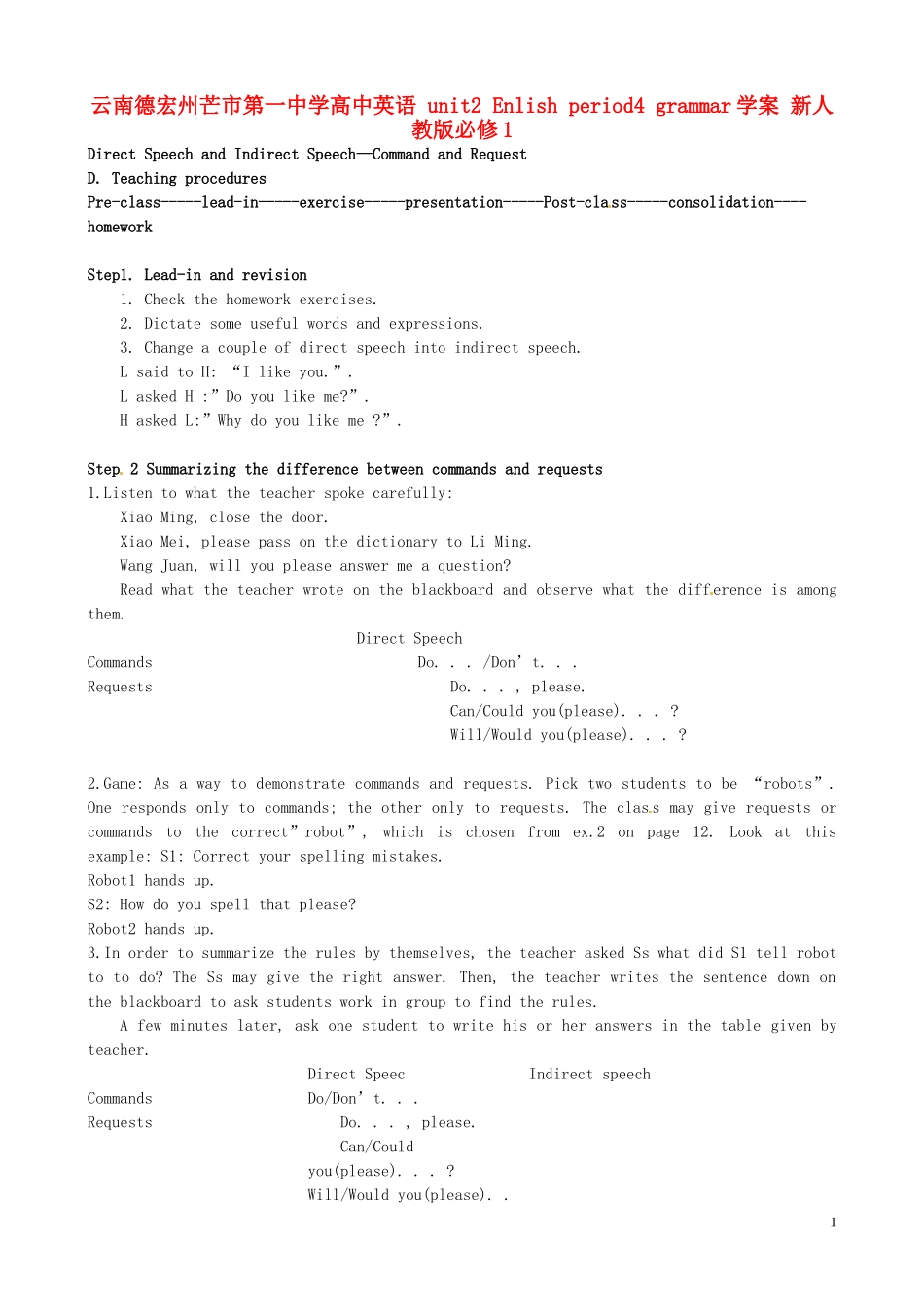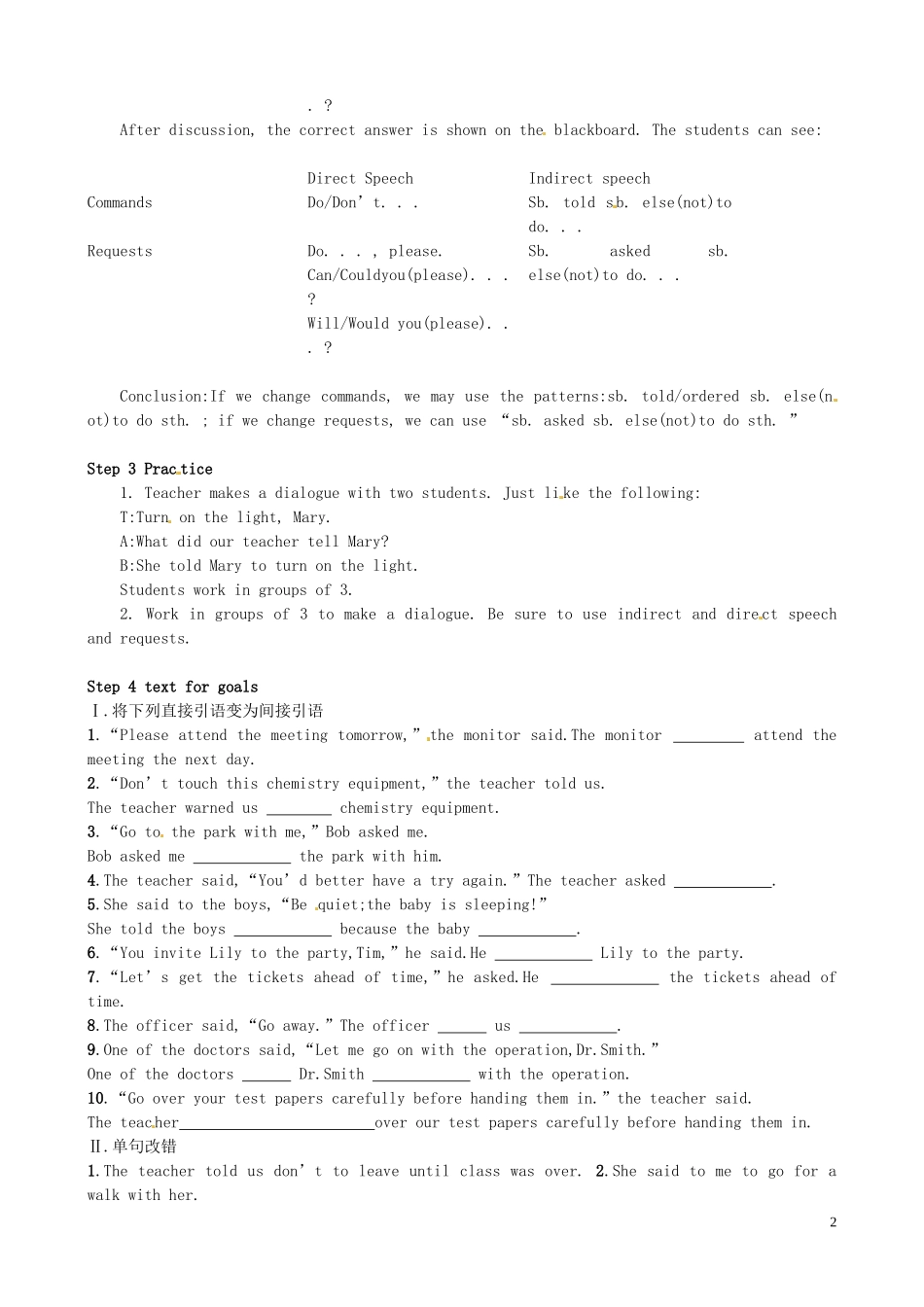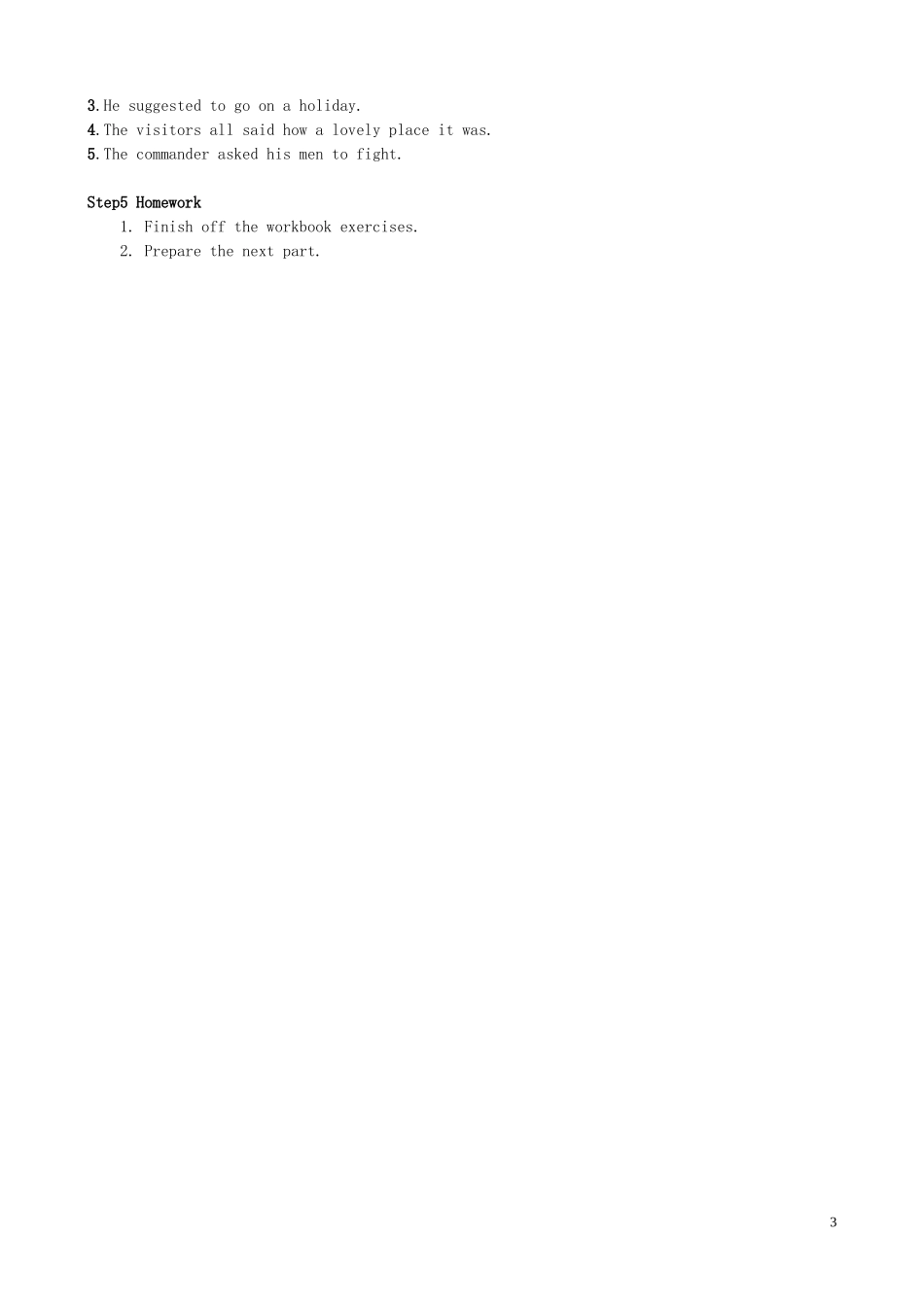云南德宏州芒市第一中学高中英语 unit2 Enlish period4 grammar 学案 新人教版必修 1Direct Speech and Indirect Speech—Command and RequestD. Teaching proceduresPre-class-----lead-in-----exercise-----presentation-----Post-class-----consolidation----homeworkStep1. Lead-in and revision 1. Check the homework exercises.2. Dictate some useful words and expressions.3. Change a couple of direct speech into indirect speech.L said to H: “I like you.”.L asked H :”Do you like me?”.H asked L:”Why do you like me ?”.Step 2 Summarizing the difference between commands and requests1.Listen to what the teacher spoke carefully:Xiao Ming, close the door.Xiao Mei, please pass on the dictionary to Li Ming.Wang Juan, will you please answer me a question?Read what the teacher wrote on the blackboard and observe what the difference is among them. Direct SpeechCommandsDo. . . /Don’t. . .RequestsDo. . . , please.Can/Could you(please). . . ?Will/Would you(please). . . ?2.Game: As a way to demonstrate commands and requests. Pick two students to be “robots”. One responds only to commands; the other only to requests. The clas s may give requests or commands to the correct”robot”, which is chosen from ex.2 on page 12. Look at this example: S1: Correct your spelling mistakes.Robot1 hands up.S2: How do you spell that please?Robot2 hands up.3.In order to summarize the rules by themselves, the teacher asked Ss what did S1 tell robot to to do? The Ss may give the right answer. Then, the teacher writes the sentence down on the blackboard to ask students work in group to find the rules.A few minutes later, ask one student to write his or her answers in the table given by teacher.Direct SpeecIndirect speechCommandsDo/Don’t. . .RequestsDo. . ....


